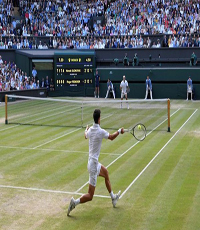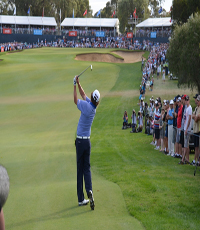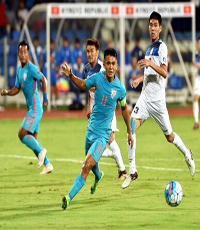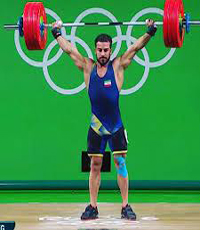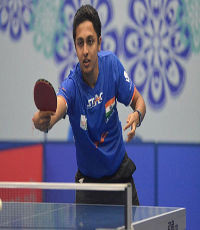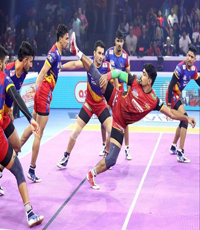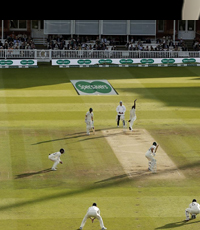
Cricket is a bat-and-ball game played between two teams of eleven players on a field at the centre of which is a 22-yard (20-metre) pitch with a wicket at each end, each comprising two bails balanced on three stumps. The batting side scores runs by striking the ball bowled at the wicket with the bat (and running between the wickets), while the bowling and fielding side tries to prevent this (by preventing the ball from leaving the field, and getting the ball to either wicket) and dismiss each batter (so they are "out").
Means of dismissal include being bowled, when the ball hits the stumps and dislodges the bails, and by the fielding side either catching the ball after it is hit by the bat, but before it hits the ground, or hitting a wicket with the ball before a batter can cross the crease in front of the wicket. When ten batters have been dismissed, the innings ends and the teams swap roles.
The game is adjudicated by the two umpires, aided by a third umpire and match referee in international matches. They communicate with two off-field scorers who record the match's statistical information.
The most successful side playing international cricket is Australia, which has won seven one day International trophies, including five World Cups, more than any other country and has been the top-rated Test side more than any other country. Cricket stars in the Indian subcontinent are treated nothing less than demigods; Sachin Tendulkar probably has the most devoted fan following in the entire world.
Dominates sports media coverage for around a quarter of the world's population in the Indian subcontinent. Also huge in UK, Australia and South Africa. 2015 world cup and 2011 semi-final between Pakistan and India watched by more than 1 billion people. Indian hero Dhoni earns more than $30 million per year. The International Cricket Council (ICC) identified that an impressive 125 countries around the world play the sport.

